There’s a highway along the Oregon coast that you won’t find on a map. It’s one of the most used highways, with travelers crowding 10 wide at times. This highway connects farmers and scientists, loggers and conservationists, people and fish. It’s the Salmon SuperHighway, which is a strategic, comprehensive effort across a six-river landscape to reconnect fish populations with the habitat they need by updating road crossings and other barriers, while also addressing flooding and road damage. When complete, it’ll span 178 river miles reconnect a 940-square-mile landscape on the North Oregon Coast that feeds Tillamook and Nestucca bays.
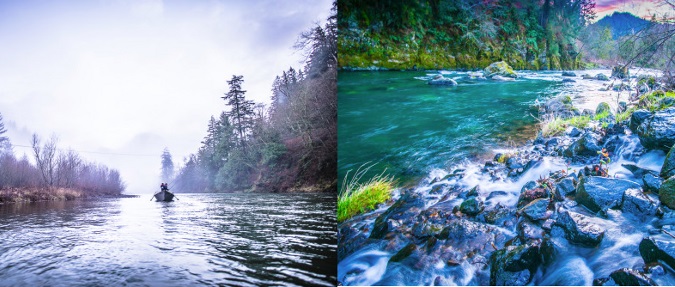
The partners are many; the impact enormous.
“This project does an immense amount of good for both fish and people. Not only do undersized and failing culverts block fish but they also limit the streams ability to distribute gravel and wood throughout the system, both of which are important components of healthy fish habitat. Wood and gravel also have the ability to plug undersized culverts and flood our roads,” said Haley Lutz the Council Coordinator for the Nestucca, Neskowin and Sand Lake Watersheds Council. “In this case, what is good for fish is good for people, too. This investment makes our watersheds healthier for people and for fish for years to come.”
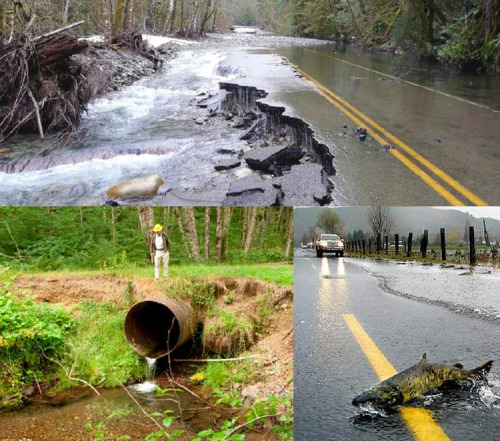
Amy Horstman is the U.S. Fish and Wildlife Service’s habitat restoration biologist for Oregon’s North Coast. She leverages three of the Service’s programs (National Fish Passage, Partners for Fish and Wildlife, and Coastal) to get the most funding and technical expertise for the projects.
“The Service’s role is pretty typical of what our restoration programs do,” Horstman said. “In addition to assistance with funding for project design and implementation, we provide technical assistance for project prioritization and selection, project development and design criteria, grant writing, federal compliance and permitting, project implementation oversight and reporting. We help provide money, tools and try to help remove obstacles so that our partners can make the projects happen on the ground.”
The Salmon SuperHighway will, when complete, make approximately 95 percent of historic habitat accessible for each fish population in each river while creating an estimated 400 local jobs, all completed with millions of dollars in locally sourced supplies.
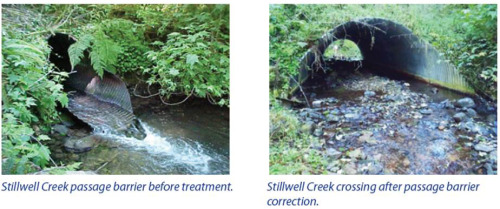
In the Tillamook and Nestucca watersheds there are detailed assessments of road crossings (usually culverts) that are blockages to fish movements in rivers and streams. The culverts are usually far smaller than the stream’s width, resulting in increased water speeds that create a washout at the downstream end. The team used the detailed assessments to identify barriers that are highest priorities based on the length and quality of upstream habitat as well as the number of at-risk fish species that use the stream.
By replacing the crossings with appropriate-sized passages, it maximizes fish use while also minimizing flooding and road damage. That’s a win-win collaborative project we can all get behind.
The six rivers in the project are the Nestucca, Tillamook, Trask, Wilson, Kilchis and Miami. This will help restore historic habitat for Chinook and coho salmon, steelhead, chum, sea-run cutthroat trout and Pacific lamprey.
The partner list is long and is a virtual who’s-who of western Oregon conservation.
- On the local side there’s Tillamook County, Tillamook Estuaries Partnership, Tillamook County Creamery Association, Tillamook Bay Watershed Council, Nestucca-Neskowin and Sand Lake Watershed Council, farmers, forestry landowners and many private landowners.
- For the state of Oregon, there’s the Department of Fish and Wildlife, Department of Forestry, Department of Transportation, Watershed Enhancement Board, and the Fish Passage Task Force.
- On the national and federal side, there’s Trout Unlimited, the U.S. Fish & Wildlife Service, U.S. Forest Service, Bureau of Land Management and Natural Resources Conservation Service.
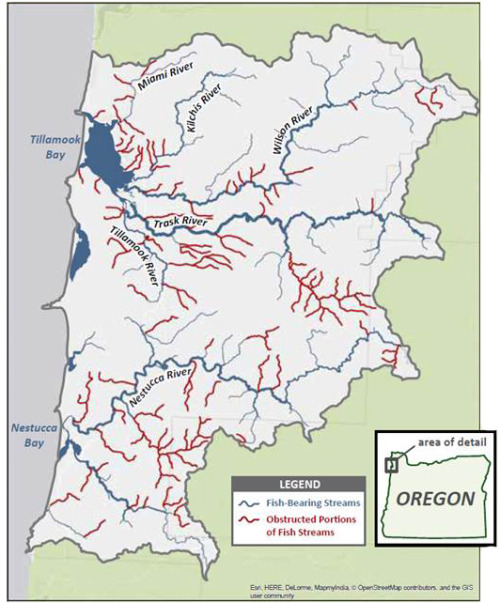
What it all adds up to is an historic opportunity for Oregon.
“Trout Unlimited has a long history of forging collaborative partnerships to accomplish restoration goals, but the Salmon SuperHwy takes partnerships to a different level,” said Terry Turner, Oregon Council Chair with Trout Unlimited. “The identified fish passage projects have a huge benefit to the community infrastructure. Tillamook County has a long history of flood events and when undersized culverts fail and wash out roads, dairy farmers can’t get to their herds, or get milk to the production facilities. Creameries can’t get product to market. Forest access is blocked for logging operations. While this is a big ‘reconnect’ project for Trout Unlimited, and provides critical habitat connection for spawning adults and juvenile rearing, the community benefits are equally important. We’re already attracting community support because of this unique partnership. It simply benefits everyone.
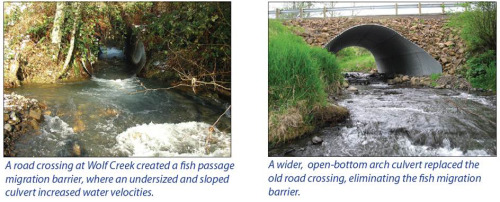
“All of the various federal and state agencies and the local Watershed Councils have provided phenomenal technical support in identifying and evaluating the barriers to be removed for the project. We are so thankful that they are part of the team, and we couldn’t do it without them.”
An essential element of the project has been the strategic nature of the plan. Our partnership started by assessing the entire six-river landscape that feeds Tillamook and Nestucca bays. They identified all 260-plus remaining barriers to fish passage throughout the area, and determined that to fix them all would cost $140 million and take about 70 years at current spending levels.
The cost of some of projects simply outweighed the overall benefit. Through a detailed cost-benefit analysis, the team determined the precise projects that achieve maximum habitat bang-for-the buck. The final tally will be 93 projects completed over 10 years at a cost of about $34 million.
“We used a landscape-scale approach to maximize benefit and minimize costs,” Horstman said. “I’m proud of the collaborative work between all of the many partners to improve our stream systems for salmon and native fish as well as a way to support critical infrastructure upgrades and improve public safety. All of the projects are beneficial to the local economy in that there are lots of jobs and materials purchased. This whole project is a huge win-win for people and fish.”
By Brent Lawrence
Brent is a public affairs officer with the U.S. Fish and Wildlife Service’s Pacific Regional office in Portland, Oregon. Learning to fly fish is on his bucket list.
All photos by Russ Schnitzer/Trout Unlimited and U.S. Fish and Wildlife Service as part of the Salmon SuperHwy project. All rights reserved.
